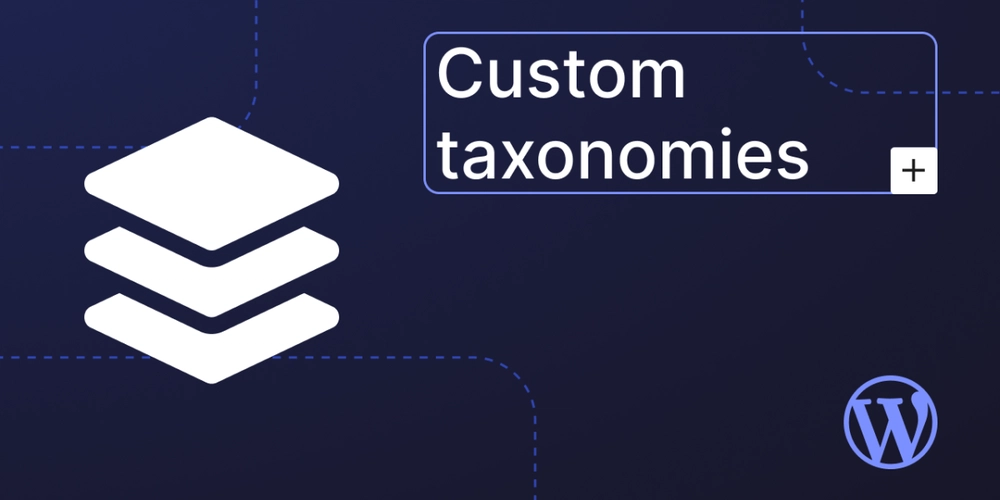K8s cluster setup in GCP with worker nodes autoscale and its discovery
Overview This section explains how to set up a Kubernetes (K8s) cluster on Google Cloud Platform (GCP) using Terraform. Instead of using GCP's managed Kubernetes service, we will install open-source Kubernetes manually inside virtual machines (VMs). Objective In software and microservice architecture design, it is essential to consider the scalability, availability, and performance of the application. I am proposing the following design considerations when selecting Kubernetes as part of the software architecture: When the application requires high performance, availability, scalability, and security When greater control over and maintenance of the infrastructure is needed When the application architecture involves complex microservices When opting for open-source solutions (optional) When Kubernetes may not be the right choice: If the application is small and can be supported by a cloud provider’s managed services, such as AWS ECS with Fargate (serverless technology) If the application does not require high throughput If the goal is to minimize IT operational costs and reduce infrastructure management responsibilities In this setup, I considered the following points while building Kubernetes (K8s) on GCP: Terraform: Used to easily deploy, manage, and destroy the cluster infrastructure. HAProxy: Implemented an open-source load balancer instead of relying on GCP’s native load balancer. HAProxy provides high-performance load balancing. Consul: Implemented VM discovery to automatically register Kubernetes worker nodes with the HAProxy load balancer. GCP Auto Scaling and VM Health Checks: Set up an autoscaling group with TCP-based health checks to ensure the availability and reliability of virtual machines. GCP RBAC: Leveraged GCP’s Role-Based Access Control to simplify node joining, manage Kubernetes-related files in GCP Buckets, and associate service accounts with bucket roles and virtual machines. Minimal Permissions: As a best practice, configured minimal necessary roles for infrastructure components to enhance security. Firewall Rules: Configured the following rules: HAProxy Ingress rule Port: 80 Public access of HAPRoxy endpoint HAProxy → Kubernetes Worker Nodes (port 30080). Consul rule Ingress and Egress For all agents based on VM tag (HAProxy, K8s Worker Nodes) Port: 8301, 8600, 8300 for Ingress and Egress rule Private and public network K8s Rule For master node and all worker nodes based on VM tag Ingress Port: 10250, 30000-32767, 10255, 6443 Private network only Egress Port: 443, 6443 Private network only For all worker nodes connecting to HProxy based on VM tag Ingress Port: 30080 Public network only Egress Port: 30080 Private network only Health Check API of GCP based on k8s nodes tag Ingress Port: 10250 GCP Health check netowrk Public and Private Subnets: Separated application workloads and network traffic by isolating resources into public and private subnets. Note: This is not a production-ready architecture. In production environments, the default network should not be used. Instead, you should create your own VPCs, such as separate networks for Management, Development, and Production environments (for eg: following HIPAA-compliant recommended network architecture practices). Prerequisites We have to setup the following tools and accounts Create GCP account [we can create free tier account] Install Terraform in your machine [Min Terraform v1.9.3] Install gcloud command line in your machine Login GCP account Login the GCP account through gcloud CLI command. Execute following command gcloud auth login (Optional) Re-authenticate for a Specific Project To log in and set a GCP project: gcloud config set project PROJECT_ID Replace GCP PROJECT_ID with your actual project. Configure the env variables Following environment variables need to configure. Replace the GCP project id with {your-gcp-project-id}. CLOUDSDK_CORE_PROJECT: This variable configure the GCP project id to use the gcloud cli command TF_VAR_gcp_project_id: This variable to configure the GCP project id to use the terraform export CLOUDSDK_CORE_PROJECT={your-gcp-project-id} export set TF_VAR_gcp_project_id={your-gcp-project-id} Terraform Structure Following the terraform module maintain to deploy the resources in the GCP account Create the Terraform workspace The following command is used to create a Terraform workspace. A workspace in Terraform functions similarly to managing different environments in software development, such as dev and prod. In this setup, the workspace helps differentiate resources for each environment within the same GCP project. We are following a consistent naming convention for resource creation in the GCP account: Naming Pattern: {project-id}-{env}-{resource-name} Examples for the dev environment: myp-dev-secure-buck

Overview
This section explains how to set up a Kubernetes (K8s) cluster on Google Cloud Platform (GCP) using Terraform. Instead of using GCP's managed Kubernetes service, we will install open-source Kubernetes manually inside virtual machines (VMs).
Objective
In software and microservice architecture design, it is essential to consider the scalability, availability, and performance of the application. I am proposing the following design considerations when selecting Kubernetes as part of the software architecture:
- When the application requires high performance, availability, scalability, and security
- When greater control over and maintenance of the infrastructure is needed
- When the application architecture involves complex microservices
- When opting for open-source solutions (optional)
When Kubernetes may not be the right choice:
- If the application is small and can be supported by a cloud provider’s managed services, such as AWS ECS with Fargate (serverless technology)
- If the application does not require high throughput
- If the goal is to minimize IT operational costs and reduce infrastructure management responsibilities
In this setup, I considered the following points while building Kubernetes (K8s) on GCP:
- Terraform: Used to easily deploy, manage, and destroy the cluster infrastructure.
- HAProxy: Implemented an open-source load balancer instead of relying on GCP’s native load balancer. HAProxy provides high-performance load balancing.
- Consul: Implemented VM discovery to automatically register Kubernetes worker nodes with the HAProxy load balancer.
- GCP Auto Scaling and VM Health Checks: Set up an autoscaling group with TCP-based health checks to ensure the availability and reliability of virtual machines.
- GCP RBAC: Leveraged GCP’s Role-Based Access Control to simplify node joining, manage Kubernetes-related files in GCP Buckets, and associate service accounts with bucket roles and virtual machines.
- Minimal Permissions: As a best practice, configured minimal necessary roles for infrastructure components to enhance security.
- Firewall Rules: Configured the following rules:
- HAProxy
- Ingress rule
- Port: 80
- Public access of HAPRoxy endpoint
- HAProxy → Kubernetes Worker Nodes (port 30080).
- Consul rule
- Ingress and Egress
- For all agents based on VM tag (HAProxy, K8s Worker Nodes)
- Port: 8301, 8600, 8300 for Ingress and Egress rule
- Private and public network
- K8s Rule
- For master node and all worker nodes based on VM tag
- Ingress
- Port: 10250, 30000-32767, 10255, 6443
- Private network only
- Egress
- Port: 443, 6443
- Private network only
- For all worker nodes connecting to HProxy based on VM tag
- Ingress
- Port: 30080
- Public network only
- Egress
- Port: 30080
- Private network only
- Health Check API of GCP based on k8s nodes tag
- Ingress
- Port: 10250
- GCP Health check netowrk
- Public and Private Subnets: Separated application workloads and network traffic by isolating resources into public and private subnets.
Note: This is not a production-ready architecture. In production environments, the default network should not be used. Instead, you should create your own VPCs, such as separate networks for Management, Development, and Production environments (for eg: following HIPAA-compliant recommended network architecture practices).
Prerequisites
We have to setup the following tools and accounts
- Create GCP account [we can create free tier account]
- Install Terraform in your machine [Min Terraform v1.9.3]
- Install gcloud command line in your machine
Login GCP account
Login the GCP account through gcloud CLI command. Execute following command
gcloud auth login
(Optional) Re-authenticate for a Specific Project
To log in and set a GCP project:
gcloud config set project PROJECT_ID
Replace GCP PROJECT_ID with your actual project.
Configure the env variables
Following environment variables need to configure. Replace the GCP project id with {your-gcp-project-id}.
-
CLOUDSDK_CORE_PROJECT: This variable configure the GCP project id to use thegcloudcli command -
TF_VAR_gcp_project_id: This variable to configure the GCP project id to use the terraform
export CLOUDSDK_CORE_PROJECT={your-gcp-project-id}
export set TF_VAR_gcp_project_id={your-gcp-project-id}
Terraform Structure
Following the terraform module maintain to deploy the resources in the GCP account
Create the Terraform workspace
The following command is used to create a Terraform workspace. A workspace in Terraform functions similarly to managing different environments in software development, such as dev and prod. In this setup, the workspace helps differentiate resources for each environment within the same GCP project.
We are following a consistent naming convention for resource creation in the GCP account:
Naming Pattern: {project-id}-{env}-{resource-name}
Examples for the dev environment:
myp-dev-secure-bucketmyp-dev-k8s-master-nodemyp-dev-k8s-worker-node-1
Examples for the prod environment:
myp-prod-secure-bucketmyp-prod-k8s-master-nodemyp-prod-k8s-worker-node-1
Note: As a best practice, production workloads should be managed in a separate GCP project. This approach improves production performance, enhances security, and ensures complete isolation between development and production environments.
terraform workspace new dev
Terraform Configuration
Resource configurations can be defined in a dev.tfvars variable file. Different variable files can be maintained for different environments (e.g., dev.tfvars, prod.tfvars).
For example, project-specific values such as the project ID and project name for each environment can be configured in these files.
For example:
#--------------------- Development Project Configuration ---------------------
#Development Project configuration, this project configuration is used to maintain resources for this project. eg: project_id will be used to create the GCP resources
project_id = "myp"
project_name = "My Project"
# --------------------- GCP Project and Regsion Configuration ---------------------
gcp_region = "us-east1"
gcp_zone = "us-east1-b"
#--------------------- Network Configuration ---------------------
nw_network_name = "default"
nw_subnet_public_address_range = "10.0.0.0/24"
nw_subnet_private_address_range = "10.0.1.0/24"
Setup the resources in GCP
Run the following Terraform command to create the resources in the GCP .
terraform init --upgrade
terraform plan -var-file="dev.tfvars"
terraform apply -var-file="dev.tfvars"
It creates the following resources in GCP project account
Service Account:
- myp-k8s-master-sa@xxxxxx.gserviceaccount.com
- myp-k8s-worker-sa@xxxxxx.gserviceaccount.com
- myp-consul-sa@xxxxxx.gserviceaccount.com
- myp-lb-haproxy-sa@xxxxxx.gserviceaccount.com VPC Network (default)→Subnet:
- myp-dev-private-subnet
- myp-dev-public-subnet VPC Network (default)→Firewall:
- myp-dev-consol-incoming-from-consol-server
- myp-dev-consol-outgoing-to-consol-server
- myp-dev-haproxy-lb-allow-http
- myp-dev-k8s-incoming-from-haproxy-lb
- myp-dev-k8s-wroker-incoming-from-k8s-master
- myp-dev-k8s-wroker-egress-to-k8s-master
- myp-dev-k8s-outgoing-to-haproxy-lb-allow
- myp-dev-k8s-incoming-from-gcp-helath-service Buckets:
- Bucket name: myp-dev-{uniqueid}-secure-bukcet
- Unique id can be configured in the dev.tfvars
- Folder name: /k8s/master-node
- Permission
- myp-dev-consul-server
- myp-dev-haproxy-lb-1
- myp-dev-k8s-master-node
- myp-dev-k8s-worker-node-mig
- myp-dev-k8s-worker-node-bxsp Instance Templates
- myp-dev-k8s-worker-node-template Instance Groups
- myp-dev-k8s-worker-node-mig Health Checks
- myp-dev-k8s-worker-node-health-check
- All health of nodes should be 100% healthy
Install Web Applications K8s cluster
We deployed nginx-web as a sample application on the Kubernetes worker nodes and accessed it through the HAProxy load balancer.
As HAProxy is the chosen load balancer in our architecture, we configured an HAProxy Ingress Controller during the master node setup. This controller efficiently routes incoming traffic to the appropriate applications running within the pods.
Install the HAProxy ingress controller into master VM in the GCP console
- Login into ubuntu user and changed into home directory
sudo su ubuntu
cd
- Ensure nodes are joined with master nodes
kubectl get nodes
#Output
NAME STATUS ROLES AGE VERSION
myp-dev-k8s-master-node Ready control-plane 6m50s v1.32.4
myp-dev-k8s-worker-node-0q3j Ready 5m26s v1.32.4
myp-dev-k8s-worker-node-c3js Ready 5m28s v1.32.4
- Ensure Hproxy pods running properly in all worker nodes
kubectl get pods -n haproxy-controller -o wide
#Output
NAME READY STATUS RESTARTS AGE IP NODE NOMINATED NODE READINESS GATES
haproxy-kubernetes-ingress-27lwj 1/1 Running 0 5m27s 192.168.100.1 myp-dev-k8s-worker-node-c3js
haproxy-kubernetes-ingress-crdjob-1-5rwd4 0/1 Completed 0 6m25s 192.168.100.2 myp-dev-k8s-worker-node-c3js
haproxy-kubernetes-ingress-khrxt 1/1 Running 0 4m56s 192.168.209.129 myp-dev-k8s-worker-node-0q3j
- Ensure Hproxy service running properly in 30080 port
#Verify the service
kubectl get svc -n haproxy-controller haproxy-kubernetes-ingress
#Output
NAME TYPE CLUSTER-IP EXTERNAL-IP PORT(S) AGE
haproxy-kubernetes-ingress NodePort 10.97.64.228 80:30080/TCP,443:30443/TCP,443:30443/UDP,1024:30002/TCP 7m35s
- Ensure Kube-proxy is Running Properly If HAProxy is running on the worker node, but the port is not open, it could be due to issues with kube-proxy, which manages the network routing for services in Kubernetes. Check if kube-proxy is running on the worker nodes:
kubectl get pods -n kube-system -o wide | grep kube-proxy
#Output
kube-proxy-9hqbv 1/1 Running 0 7m15s 10.0.1.4 myp-dev-k8s-worker-node-c3js
kube-proxy-cnlbl 1/1 Running 0 8m29s 10.0.1.3 myp-dev-k8s-master-node
kube-proxy-jrh2p 1/1 Running 0 7m13s 10.0.1.5 myp-dev-k8s-worker-node-0q3j
Install sample nginx server in the K8s and create ingress resource of HAProxy
- Install
nginx-webserver on K8s and expose80port
kubectl create deployment nginx-web --image=nginx --port=80
kubectl get deployments.apps -o wide
kubectl expose deployment nginx-web --port=80 --target-port=80 --type=ClusterIP
kubectl get svc
#Output
NAME TYPE CLUSTER-IP EXTERNAL-IP PORT(S) AGE
kubernetes ClusterIP 10.96.0.1 443/TCP 9m3s
nginx-web ClusterIP 10.111.110.192 80/TCP 1s
- To Actually Spread Pods Across Multiple Nodes
kubectl scale deployment nginx-web --replicas=2
kubectl get pods -o wide -l app=nginx-web
Output:
NAME READY STATUS RESTARTS AGE IP NODE NOMINATED NODE READINESS GATES
nginx-web-8684b95849-j59tv 1/1 Running 0 11s 192.168.209.130 myp-dev-k8s-worker-node-0q3j
nginx-web-8684b95849-wn224 1/1 Running 0 32s 192.168.100.3 myp-dev-k8s-worker-node-c3js
- Create the ingress resource to rout the request into
nginx-web:80application
#Install VI editor to create the resource file
sudo apt install vim -y
vi nginx-ingress.yaml
#Copy following configuration insuide `nginx-ingress.yaml`
#nginx-ingress.yaml
apiVersion: networking.k8s.io/v1
kind: Ingress
metadata:
name: nginx-ingress
namespace: default
annotations:
ingress.class: "haproxy"
spec:
rules:
- http:
paths:
- path: /
pathType: Prefix
backend:
service:
name: nginx-web
port:
number: 80
- Apply the ingress resource
kubectl apply -f nginx-ingress.yaml
- Identify the worker node Ip and test access of app through Node Port of worker node
kubectl get nodes -o wide
curl http://:30080
curl http://:30080
We will see following output of Nginx server home page
Welcome to nginx!
If you see this page, the nginx web server is successfully installed and
working. Further configuration is required.
For online documentation and support please refer to
href="http://nginx.org/">nginx.org.
Commercial support is available at
href="http://nginx.com/">nginx.com.
Thank you for using nginx.









































































































































































![[The AI Show Episode 146]: Rise of “AI-First” Companies, AI Job Disruption, GPT-4o Update Gets Rolled Back, How Big Consulting Firms Use AI, and Meta AI App](https://www.marketingaiinstitute.com/hubfs/ep%20146%20cover.png)

























































































































![[DEALS] The Premium Python Programming PCEP Certification Prep Bundle (67% off) & Other Deals Up To 98% Off – Offers End Soon!](https://www.javacodegeeks.com/wp-content/uploads/2012/12/jcg-logo.jpg)















































.jpg?#)


































































-Mafia-The-Old-Country---The-Initiation-Trailer-00-00-54.png?width=1920&height=1920&fit=bounds&quality=70&format=jpg&auto=webp#)
-Nintendo-Switch-2---Reveal-Trailer-00-01-52.png?width=1920&height=1920&fit=bounds&quality=70&format=jpg&auto=webp#)























_Aleksey_Funtap_Alamy.jpg?width=1280&auto=webp&quality=80&disable=upscale#)
_Sergey_Tarasov_Alamy.jpg?width=1280&auto=webp&quality=80&disable=upscale#)















































































































![Apple Shares Official Trailer for 'Stick' Starring Owen Wilson [Video]](https://www.iclarified.com/images/news/97264/97264/97264-640.jpg)


![Beats Studio Pro Wireless Headphones Now Just $169.95 - Save 51%! [Deal]](https://www.iclarified.com/images/news/97258/97258/97258-640.jpg)




























































































